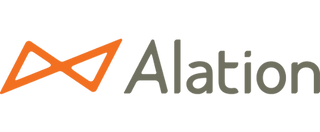
Alation Change Management
Data Literacy & Adoption Plan.
“Adoption challenges can lead the data governance team on a very long, bumpy, and not very enjoyable ride. Adoption may be the most challenging problem we must solve for the longer-term success of our data governance programs. It is a complex issue given that no two organizations may have the same barriers inhibiting adoption. What is easy for one organization may be impossible to achieve for another.”
Your Situation and Challenges
Data and technologies are changing at a rapid pace. Similarly, business directions and requirements also change, and all these changes need to be supported to prevent disruption and ensure they are leveraged to the maximum.
You’ve invested a considerable budget putting Data Governance or Data Quality, and you are not seeing the ROI. You may have a data literacy or lack of adoption problem.
Once your data solution project is over, how do you ensure the solutions are being used? Planning your data & technology adoption as part of your project, or shortly after it is delivered, is vital.
The obstacles to data literacy and technology adoption can be many and various, covering a broad spectrum of areas including:
Reluctance of staff to let go of familiar processes and procedures.
Perception that any change will add complications but not add value, thereby hampering enthusiasm to adopt.
Lack of awareness of the change or availability of data.
General fear of change.
Lack of personal confidence.
Start by identifying, understanding, categorizing, and defining barriers and put in place a plan to:
Gain an early understanding of the different types of users, their data needs, and their attitudes to data, technology, and change.
Review different communication and adoption techniques and analyze which are most appropriate for your user types.
Use a “Follow the Leader” approach, by having data super users, technical enthusiasts, and champions show the way.
Prevent access to old systems and methods.
Situation
Challenges
Insight
Data Literacy and Adoption is about change
For every data technology or data asset that will be directly used by users, consider the question, “Will the final product be readily accepted by those who are going to use it?” There is no point in implementing a product that no one is prepared to use. Gaining user acceptance is much more than just ticking a box in a project plan once UAT is complete.
Approach
-
Gain a clear understanding of your user categories and how this affects their approach to new data technologies and data assets themselves.
The categories are:
The Innovator
The Early Adopter
The Early Majority
The Late Majority
The Laggard
-
Understand the range of different tools and techniques available to foster data literacy and the adoption of data governance or data quality solutions.
-
Determine the most appropriate techniques for your user base. Determining content is the easy part, but deciding how to disseminate it is what will make the ultimate different
-
Be aware of the different skills in your environment and use them to your advantage.
-
Prevent reversion to old methods or systems.
Technology adoption is all about people.
Therefore, the techniques required to drive that adoption need to be people oriented.
The below techniques are carefully selected with the intention of being impactful on all the different categories described previously.
Train The Trainer
Herd Mentality
Champions
Enforce
Group Training
One-on-One
Contests
Marketing
Proof of Concept
Train The Trainer Herd Mentality Champions Enforce Group Training One-on-One Contests Marketing Proof of Concept
Deliverables
-
To make sure we can effect change, we evaluate such existing capabilities as Cultural Readiness, Leadership Support, Organizational Knowledge, Change Management Skills, Toolkit & Templates, and Process Discipline
-
Gathering information about user groups, business processes, and day-to-day tasks to gain familiarity with your adopters.
-
To analyze the impacts of the intake and prioritization process implementation/ optimization across various stakeholders and groups. Based upon the impact analysis, we draft a communications plan around the impacts for each stakeholder group and compile a communication management plan.
-
We complete the engagement with a roadmap. The creation of various artifacts to support the various techniques identified are part of the plan.
-
Each deliverable above and in the ensuing roadmap is adapted for the specific technology. As experts, we are in an excellent position to accomplish this for your organization.
Clarity is important. Having a firm grasp on what’s expected when you engage us, including objectives and deadlines, is crucial to your success. We like to make things clear so you know what you’re getting.
Contact us.
Analytics is a journey, not a destination. This journey can eventually result in some level of sophisticated AI/machine learning in your organization. Every organization needs to mobilize its resources and enhance its analytics capabilities to quickly and incrementally add value to data products and services. Let Incept help you mobilize your resources in this way.






